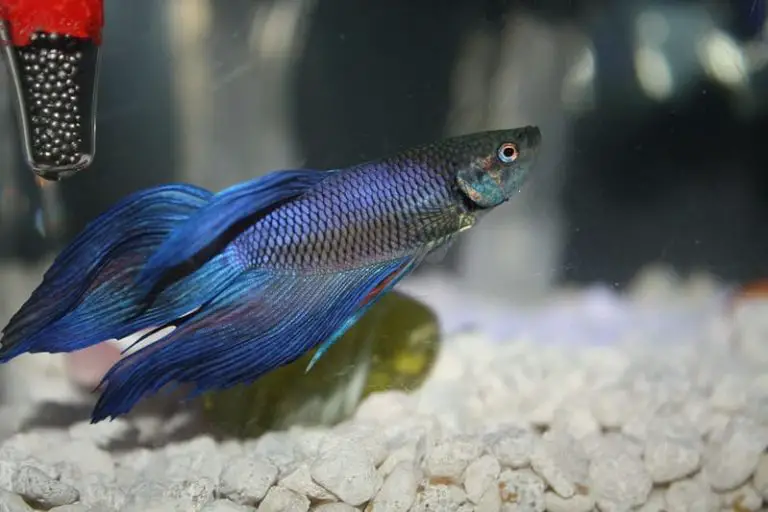How To Tell If A Fish Has Ciguatera?

Ciguatera is one of the most common fish poisonings worldwide, caused by ciguatoxins present in edible fish.
This toxin is found only in fish from tropical and subtropical countries but can reach other parts of the world through imported fish.
The problem is that a ciguatera fish is impossible to detect with the naked eye or human senses, because ciguatoxin is odorless, colorless, does not alter the taste of the fish, and does not alter the physical appearance of the fish.
But there are ways to minimize ciguatera poisoning by recognizing the source and type of fish that is most likely to have this toxin.
Ciguatoxin poisoning is triggered by metabolic products of microalgae, which have their natural habitat in the coral reefs of the Caribbean Sea and the Pacific and Indian Oceans.
Herbivorous fish feed on these microorganisms. If the small fish are eaten by larger predatory fish, the ciguatoxins can accumulate and enter the human food chain.
New and reliable methods for detecting the presence of ciguatoxins in fish and microalgae are currently being developed and established.
The detection of ciguatoxins places great demands on analytical methods, as the toxins are effective at very low concentrations.
Furthermore, they occur in many different chemical structures, depending on the fishing area. So far, there is no analytical method with which fish can be routinely screened for ciguatoxins.
How to reduce the risk of ciguatera poisoning?
Since it is very difficult to immediately detect a fish with ciguatera, the most appropriate way to reduce the risk of consuming the fish is to recognize which fish are most susceptible to ciguatera toxin.
As well as in which parts of the body ciguatoxin accumulates in a fish, ciguatera is a toxin obtained from small reef-feeding fish in the Pacific and the Caribbean Sea.
These fish, in turn, are the food of larger predatory fish which produces a food chain, the ciguatoxin passes from microorganisms on the reefs to small fish and then to larger fish.
Therefore, ciguatera is found more in tropical predatory fish such as barracuda, grouper, moray eel, marlin, sea bream, sailfish, snapper, jacks, jack mackerel, among other large tropical fish.
In these large tropical predatory fish, the highest amount of ciguatoxin can be found, because they feed on a large number of small fish that already have the toxin.
The part of the body where most of the toxin accumulates in these fish is in the innards and head, so it is recommended to avoid consuming these parts as well.
Ciguatera fish poisoning symptoms
The first signs of ciguatera poisoning appear between 15 minutes and 24 hours after ingestion, although the average is about 12 hours. The signs of ciguatera are, in the acute phase, gastrointestinal (nausea, vomiting, abdominal pain and diarrhea).
There may also be neurological symptoms such as:
- An abnormal sensation of tissues, cold and/heat, tingling (paresthesia) and sensitivity disorder (dysesthesia).
- Muscular discomfort.
- Skin disorder, basically itching
- Cardiovascular signs such as decreased heart rate (bradycardia), decreased blood pressure (hypotension) or tachycardia.
Other signs are:
- Joint discomfort
- Vertigo
- Headache
- Loss of consciousness
- Hallucinations
- Fatigue
- blurred vision
- Hiccups
- Thialism
- Exacerbation of acne
- Metallic taste in the mouth
Can ciguatera be cooked out?
Fish with ciguatoxin can not be detected by appearance, taste, or odor, and the toxin is not removed by freezing, filleting, or cooking the fish. There is currently no FDA-approved test for ciguatoxin.
Can you get ciguatera from eating salmon?
Salmon is a sea fish and also a freshwater fish regularly found in the oceans, this type of fish is not exposed to ciguatoxin.
And although the salmon is also a fish that eats small fish and crustaceans, it does not frequent coral reefs, it feeds on small fish in the ocean, which do not contain ciguatoxin.
What treatments are used for ciguatera toxin?
The treatment regimen is an osmotic diuretic with parenteral mannitol for symptom relief. It is also important to rehydrate the patient with saline to balance the losses caused by diarrhea and vomiting.
For further treatment, calcium gluconate, a mineral supplement, may be prescribed orally; and for chronic symptoms, amitriptyline, an analgesic, and antidepressant.
Resources:
https://calpoison.org/news/ciguatera






